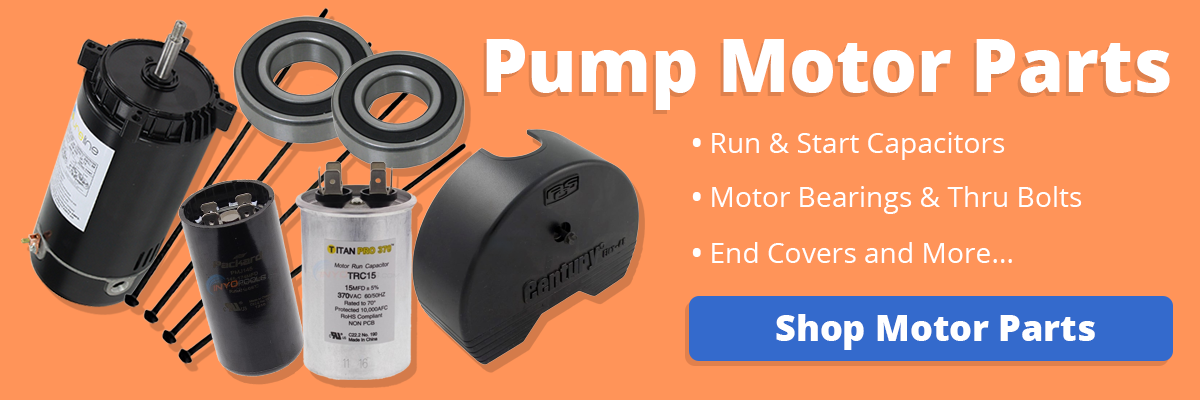Step 2
MOTORS WITH CAPACITORS - Not all pool pump motors use capacitors. There are four common types of residential pool pump motors: Split Phase, Capacitor Start, Permanent Split Capacitor and Capacitor Start/ Capacitor Run.
The Split Phase motor is used extensively in spa and jetted tubs, and above ground pools. This design has a start winding and a start switch, but no capacitors.
The Capacitor Start motor is used commonly is in ground pool pumps.The starting torque is higher (150-175% of full load) and starting current lower than the split phase equivalent. The operation is similar to a split phase in that there is a start switch to take the start winding and capacitor out of the circuit once the motor reaches 2/3 to 3/4 of full speed.
The Permanent Split Capacitor motor does not have a start switch and is often referred to as a “switchless” motor. It does use a Run Capacitor that remains in the circuit at all times. The PSC design has significantly less starting torque than the capacitor start design.
The Capacitor Start/ Capacitor Run motor design is used to increase efficiency in run mode. Both Start and Run Capacitors are used. In run mode, PSC and Cap. Start/Cap. Run motors are the same.




SB Posted: 10/1/2016
I have a 2-speed AO Smith spa pump motor (Century 7-196012-03) which sometimes fails to start. Since it's the circulating pump a start failure causes an overheat condition. The other day when I turned it on it hummed only, but when I rapped it with my knuckles it started running. The shaft seems to turn smoothly by hand, and when running it doesn't sound bad, but a little louder than the single-speed pump (same motor). The run capacitor in both motors look fine. Does this sound like a capacitor problem, motor problem, sticky pump, something else?? Many thanks, SB (And nice site, I appreciate the tech info!)Reply
Dave B. Posted: 9/29/2016
My pump motor would not turn on at all. It would just hum for 10 seconds or so. I replaced the capacitor and now it comes on fine, but only on high. Any thoughts would be sincerely appreciated!Reply
InyoPools Product Specialist Dennis R. Posted: 9/2/2016
capacitor - Here is the link to a #628318-308 capacitor.Reply
Anonymous Posted: 8/31/2016
need a replacement capacitor for a genteq 27L1358 30uf 370vac 50/60 hz manufacturer # 628318-308. any suggestions on what to buyReply
Christer Posted: 7/31/2016
Excellent resource and troubleshooting. Thank you!Reply
InyoPools Product Specialist Dennis R. Posted: 2/9/2016
User1 - This is a characteristic of low voltage. You may have your pump motor set up for 220V with a supply voltage of 110V. See Step #4 of our guide on "How To Determine Why a Motor Won't Start or Shuts Off" for other suggestions.Reply
User1 Posted: 2/6/2016
What could be my problem if the pump keeps turning on and off right after the power is turned on. The pump goes on and off about 5 times and then the GFI breaker goes off. Any thoughts anyone?Reply
Jean Posted: 1/10/2016
THANK YOU! Finally someone who explains repairs simply and concise. I had been trying to find out the difference in Start and Run Capacitors and you spelled it out. Again, thank you from a lady trying to do home repairs - and lots of them!Reply
Anonymous Posted: 7/13/2015
Excellent tutorial.Reply
ken Posted: 4/29/2015
Good definitions and procedures.Reply